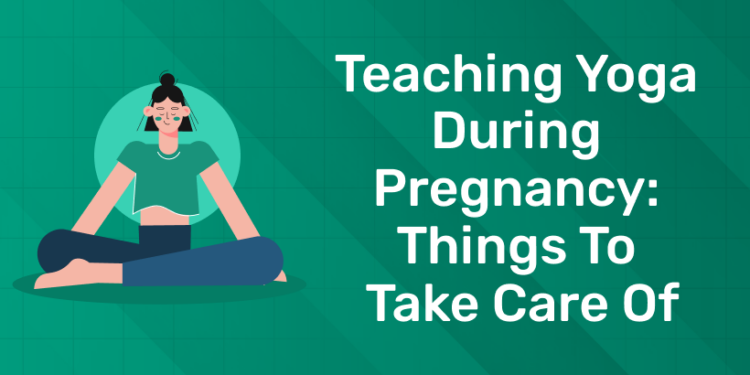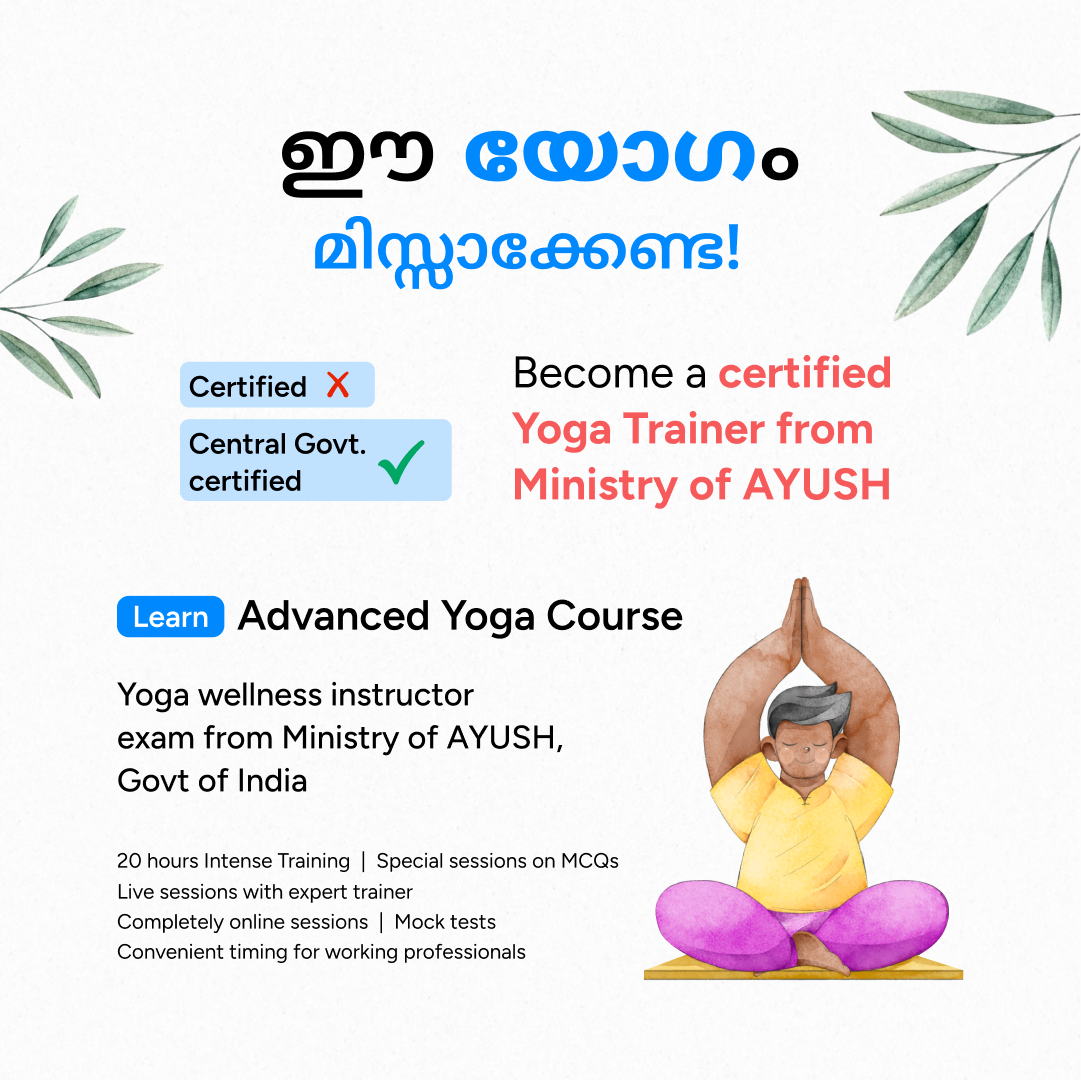Table of Contents
Pregnancy brings many changes to ones body and mind. Some common changes are: short of breath, dizzy, or having loose joints. Teachers should know about these changes to keep pregnant students safe in class. This article is about “Teaching Yoga During Pregnancy: Things to Take Care Of”.
Usually, it’s not recommended for pregnant women to do yoga before 14 weeks into the pregnancy. But if a pregnant woman already practices yoga regularly, it’s generally safe to continue during the first trimester.
Get Certified, Get Confident! Join Our Yoga Teacher Training Course!
Teaching Yoga During Pregnancy: Things to Take Care Of
Guidelines for Teaching Yoga to Pregnant Students
Obtain Pregnancy Health Information
- Use a pregnancy health registration form to gather important details.
- Trimester: Adaptations vary, so knowing the trimester is crucial.
- Pre-pregnancy Yoga Practice: Understanding their background helps tailor modifications.
- Injuries and Symptoms: Be aware of potential complications and discomforts.
- Emotional State: Addressing emotional well-being is essential for a supportive practice.
- Doctor Consultation: Ensure they’ve informed their healthcare provider about their yoga practice.
- Legal Disclaimer: Have them sign a disclaimer accepting responsibility for their practice.
Monitor Pregnant Students Closely
- Position pregnant students at the front of the class for better observation.
- Keep a watchful eye for signs of struggle or overexertion during class.
- Provide timely reminders to slow down and offer assistance when needed.
Review Modifications Before Class
- Discuss modifications with pregnant students before the class begins.
- Prepare both a general and modified lesson plan to share with them.
- Highlight pose adjustments to ensure safety and comfort throughout the practice.
Utilize Props for Support
- Use props such as blocks, bolsters, blankets, and straps for added stability.
- Props create space within postures and offer necessary support for pregnant students.
Emphasize Kindness and Awareness
- Encourage pregnant students to practice with mindfulness and kindness.
- Remind them to listen to their bodies and adjust according to their needs.
- Prioritize relaxation, breath work, and meditation, especially in the first trimester.
Keep Pregnant Students in Sight
- Position pregnant students at the front to prevent comparison with others.
- Monitor their practice closely and offer personalized guidance as needed.
- Take time after class to check in and gather feedback on their experience.
Yoga During Pregnancy: Safety Guidelines
Talk to a Doctor
- Before doing any yoga, check with a doctor.
- They’ll give advice based on health and pregnancy.
Take it Easy
- Avoid poses that strain the belly and listen to the body.
- Start with gentle poses and don’t push too hard.
Drink Water
- The student should stay hydrated during and after yoga.
- Dehydration can cause problems, so ensure they are drinking enough water.
Use Props
- Use blocks and cushions to keep the student’s body aligned.
- This helps prevent injuries during yoga.
Skip Risky Poses
- Avoid poses like lying on belly or deep twists.
- Also, don’t push too hard on the belly muscles.
Stay Cool
- The student should stick to moderate-temperature yoga.
- Hot yoga can be risky during pregnancy, so keep it cool.
Teaching Pregnancy Yoga Across Trimesters
First Trimester:
- Avoid belly compression poses and twists.
- Focus on relaxation, breathing, and gentle poses.
- Listen to mothers and adjust poses as needed.
Second Trimester:
- Mothers feel better physically with more energy.
- Adapt poses to accommodate the growing belly.
- Explain changes clearly and consider fatigue levels.
Third Trimester:
- Emphasize relaxation and prepare for childbirth.
- Focus on creating space and openness in poses.
- Help mothers get ready to meet their baby.
Prenatal Yoga Guidelines
First Trimester Protocol:
- Begin with a prayer for 1 minute.
- Perform gentle micro circulation practices for 8 minutes.
- Neck movements, shoulder stretches, knee and ankle rotations.
- Practice basic yoga asanas for 10 minutes.
- Follow with breathing practices for 20 minutes.
- Engage in meditation for 5 minutes.
- Conclude with a minute of peace.
Second Trimester Protocol:
- Start with a minute of prayer.
- Perform micro circulation practices for 5 minutes.
- Continue with yoga asanas for 18 minutes.
- Standing, sitting, supine, and prone postures.
- Engage in pranayama for 10 minutes.
- Meditate for 10 minutes.
- End with a minute of peace.
Third Trimester Protocol:
- Begin with a minute of prayer.
- Perform micro circulation practices for 5 minutes.
- Practice yoga asanas for 15 minutes.
- Include standing, sitting, and supine postures.
- Engage in pranayama for 8 minutes.
- Meditate for 15 minutes.
- Conclude with a minute of peace
What is unsafe?
Twists:
- Avoid or use very gentle variations of twists to prevent strain.
- Twists can put pressure on the belly, so it’s best to avoid them.
Belly Pressure:
- Steer clear of poses that may press on the belly.
- Pressure on the belly can be uncomfortable or even harmful for pregnant women.
Balance Poses:
- Skip balance poses that could make mothers feel unstable.
- Use the wall for support to reduce fatigue and ensure safety.
What is Safe?
Focus Areas in Pregnancy Yoga:
Pelvic Floor Opening:
- Include poses that prepare the pelvic floor for childbirth.
- These poses help mothers get ready for delivery.
High Back Chain Opening:
- Work on opening the upper back to counteract shoulder closing.
- The weight of breasts can cause mothers to hunch, so focus on opening the upper back.
Spine Elongation:
- Teach poses that elongate the spine and create space for the belly.
- Ensure comfort and avoid discomfort during these poses.
Get Certified, Get Confident! Join Our Yoga Teacher Training Course!
Yoga During Pregnancy: Benefits
Stress Reduction
- Yoga promotes relaxation and reduces stress hormones.
- This helps both the mother and the baby.
Better Sleep
- Yoga improves sleep quality, which is often challenging during pregnancy.
Strength and Flexibility
- Yoga strengthens important muscles for childbirth and improves flexibility.
- It helps to ease pregnancy-related aches and pains.
Symptom Relief
- Yoga alleviates common pregnancy discomforts like back pain, nausea, and headaches.
Preparation for Childbirth
- Yoga teaches breathing techniques and relaxation for labor.
- It helps pregnant women mentally and physically prepare for childbirth.
Bonding with Baby
- Yoga fosters emotional connection with the unborn baby.
- Through mindful exercises and meditation, mothers strengthen the bond with their child.
Entri’s Course For Yoga Teacher
If you want a great career and a healthier life, yoga is perfect! There’s a big need for yoga teachers everywhere. Entri App provides a three-month training course. It’s 200 hours and includes online lessons, in-person classes, and lots of practice. This course gets you ready for an exam by the Central Government AYUSH Ministry to become a Yoga Wellness Instructor. After, you can work flexible hours, help others be healthy, and become a popular yoga teacher!
Teaching Yoga During Pregnancy: Conclusion
1: Which of these is the primary goal of yoga practice?
In this article we have discussed how to keep your student safe while teaching yoga during pregnancy. The benefits of practicing yoga during pregnancy were also listed down. The yoga positions which are safe and the positions which are unsafe were highlighted for the benefit of the expectant mother.
Become a Certified Yoga Instructor
Yoga Teacher Training Course by Entri App: Master authentic yoga techniques, earn certification, and build a successful career as a professional yoga instructor.
Join Now!Frequently Asked Questions
Can I teach yoga when pregnant?
Yes, but it’s important to modify your practice and avoid strenuous poses.
What yoga poses are not safe during pregnancy?
Avoid deep twists, backbends, and inversions. Listen to your body and modify as needed.
Should I tell my yoga teacher I'm pregnant?
Yes, inform your teacher so they can provide appropriate modifications and support.
Is it OK to start yoga while pregnant?
Yes, but start slowly and choose classes specifically designed for pregnant women.
In which month can I start yoga in pregnancy?
You can start yoga at any time during pregnancy, but it’s best to consult with your healthcare provider first.
Is it OK to do surya namaskar during pregnancy?
It’s generally safe, but modify the poses to avoid putting pressure on the abdomen.
Which yoga is best in pregnancy?
Prenatal yoga classes or gentle hatha yoga tailored for pregnant women are ideal.
Which pranayama to avoid during pregnancy?
Avoid breath retention (kumbhaka) and vigorous breathing practices. Stick to gentle, calming breathwork.
























